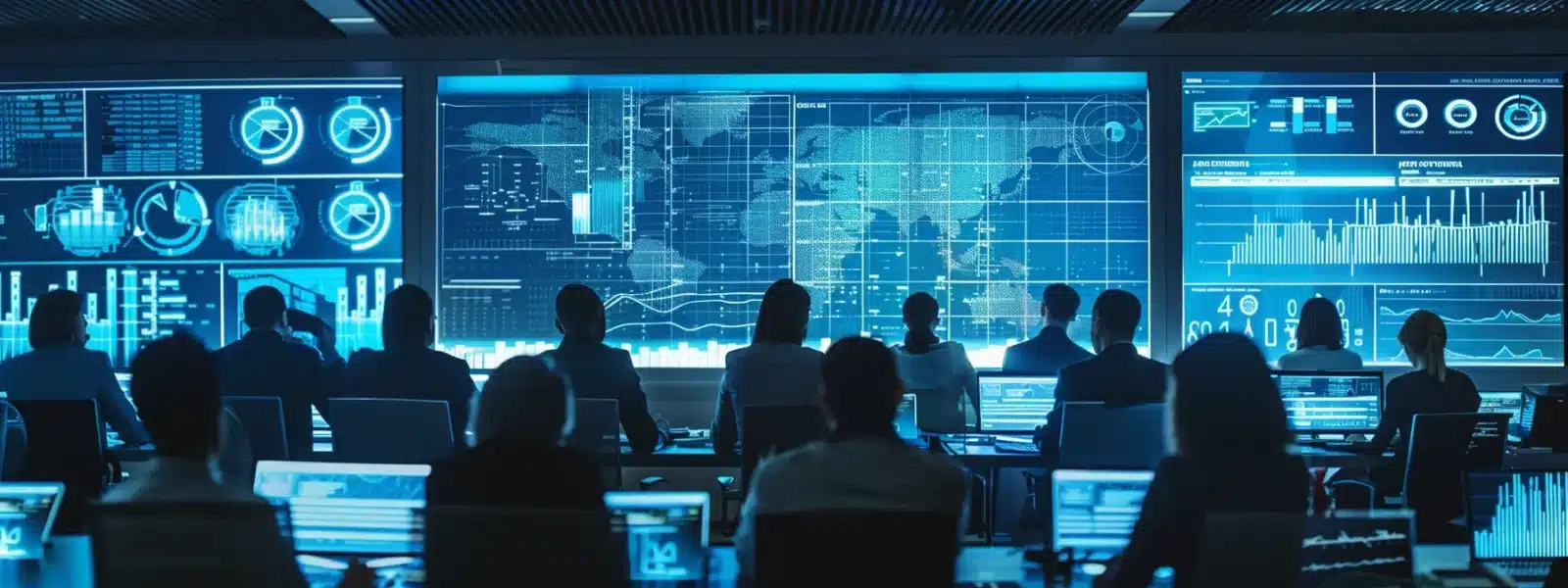Achieving CMMC compliance is essential for defense contractors, especially as procurement processes increasingly require it. This guide will cover the key requirements for CMMC certification, the steps to prepare for compliance, and how to integrate necessary cybersecurity practices into daily operations. By engaging with this content, readers will gain valuable insights into overcoming common challenges faced by small businesses in the supply chain. Understanding these elements will help ensure that defense contractors can meet compliance standards and secure their position in the competitive market.
Key Takeaways
- CMMC compliance is a legal requirement for defense contractors seeking DoD contracts
- Organizations must continuously improve their cybersecurity practices to maintain CMMC compliance
- Engaging leadership and building a compliance team are essential for successful CMMC certification
- Protecting controlled unclassified information (CUI) is critical for achieving CMMC compliance
- Regular assessments and updates are necessary to adapt to evolving cybersecurity threats
Understanding CMMC Compliance Requirements for Defense Contractors

The Cybersecurity Maturity Model Certification (CMMC) establishes a framework for defense contractors to enhance their cybersecurity infrastructure. This section will explore the different levels of CMMC, their significance, and why compliance is essential for organizations handling sensitive data. It will also address key changes from previous cybersecurity requirements and clarify common misconceptions about CMMC, emphasizing the importance of regulatory compliance and risk management. cmmc consulting can help organizations navigate these requirements effectively.
What Is the Cybersecurity Maturity Model Certification (CMMC)?
The Cybersecurity Maturity Model Certification (CMMC) is a framework designed to enhance the cybersecurity posture of defense contractors. Developed by the Department of Defense (DoD), it integrates standards from the National Institute of Standards and Technology (NIST) to ensure that organizations handling sensitive data meet specific security requirements. CMMC establishes a tiered approach, with five levels of maturity, each requiring different levels of compliance and security practices.
Compliance with CMMC is not just a recommendation; it is a legal requirement for defense contractors seeking contracts with the DoD. Contracting officers will assess a contractor’s CMMC level during the procurement process, making it essential for organizations to achieve the necessary accreditation. Failure to comply can result in losing contracts and facing legal repercussions, underscoring the importance of understanding and implementing CMMC requirements.
One of the key aspects of CMMC is its focus on continuous improvement and risk management. Organizations must not only meet the initial compliance requirements but also demonstrate ongoing adherence to cybersecurity practices. This proactive approach helps mitigate risks associated with cyber threats, ensuring that sensitive information remains protected. By prioritizing CMMC compliance, defense contractors can enhance their reputation and build trust with clients and partners in the defense sector.
The Different Levels of CMMC and Their Significance
The Cybersecurity Maturity Model Certification (CMMC) consists of five distinct levels, each designed to address varying degrees of cybersecurity maturity. Level one focuses on basic safeguarding of controlled unclassified information (CUI), requiring organizations to implement fundamental security practices. As contractors progress through the levels, they must adopt more advanced measures, such as enhanced access control and vulnerability management, to protect sensitive data effectively.
Why CMMC Compliance Matters for Defense Contractors
CMMC compliance is essential for defense contractors as it directly impacts their ability to secure contracts with the Department of Defense (DoD). Organizations that fail to meet the Cybersecurity Maturity Model Certification requirements risk losing access to lucrative opportunities within the defense sector. This compliance not only demonstrates a commitment to cybersecurity but also enhances the contractor’s reputation among clients and partners, particularly in critical infrastructure sectors.
Moreover, CMMC compliance helps organizations manage risk effectively. By adhering to the established cybersecurity standards, defense contractors can identify vulnerabilities and implement necessary safeguards to protect sensitive data. This proactive approach is crucial, especially for subcontractors who may handle controlled unclassified information (CUI) on behalf of larger prime contractors, ensuring that the entire supply chain maintains a robust security posture.
In addition, achieving CMMC compliance aligns with other regulatory frameworks, such as FedRAMP, which emphasizes the importance of cybersecurity in cloud services. By integrating these standards, defense contractors can streamline their compliance efforts and enhance their overall cybersecurity strategy. This alignment not only simplifies the compliance process but also positions organizations favorably in a competitive landscape where cybersecurity is paramount.
| Key Aspects of CMMC Compliance | Importance for Defense Contractors |
|---|---|
| Securing DoD Contracts | Essential for accessing lucrative opportunities |
| Risk Management | Identifies vulnerabilities and safeguards sensitive data |
| Alignment with FedRAMP | Simplifies compliance and enhances cybersecurity strategy |
Key Changes From Previous Cybersecurity Requirements
The transition to the Cybersecurity Maturity Model Certification (CMMC) introduces significant changes from previous cybersecurity requirements, particularly in terms of accountability and oversight. Unlike earlier frameworks, CMMC mandates a third-party audit process to verify compliance, ensuring that defense contractors meet the established standards. This shift emphasizes the importance of rigorous assessments, as organizations must now demonstrate their cybersecurity practices through formal evaluations rather than self-assessments.
Another key change involves the integration of the CMMC framework with the Code of Federal Regulations (CFR), which outlines specific requirements for federal contractors. This alignment enhances the regulatory landscape, making it clear that compliance is not merely a suggestion but a legal obligation for those seeking contracts with the Department of Defense. The rulemaking process surrounding CMMC has established a structured approach that holds organizations accountable for their cybersecurity measures, reinforcing the need for robust security practices.
Furthermore, CMMC introduces a tiered certification model that requires contractors to achieve specific maturity levels based on their operations and the sensitivity of the data they handle. This model contrasts with previous requirements that often lacked a clear progression path. By establishing defined levels of certification, CMMC encourages organizations to continuously improve their cybersecurity posture, ultimately fostering a culture of security that is essential for protecting sensitive information in the defense sector.
Common Misconceptions About CMMC
One common misconception about CMMC is that it is merely a guideline rather than a strict regulation. In reality, CMMC is a mandatory requirement for defense contractors seeking to engage with the Department of Defense (DoD). Organizations must understand that compliance with this policy is not optional; it is a legal obligation that directly impacts their ability to secure contracts and maintain their standing in the defense sector.
Another misunderstanding is that achieving CMMC compliance is a one-time effort. Many believe that once they meet the requirements, they can relax their information security practices. However, CMMC emphasizes continuous improvement and ongoing adherence to cybersecurity standards. Organizations must regularly assess their security measures and adapt to evolving threats to maintain compliance and protect sensitive data effectively.
Lastly, some contractors assume that CMMC compliance is solely about meeting technical requirements. While technical controls are essential, the framework also focuses on organizational practices and culture. This includes fostering a security-aware environment and ensuring that all employees understand their role in maintaining compliance. By addressing both technical and organizational aspects, defense contractors can create a robust cybersecurity posture that aligns with the federal acquisition regulation and enhances their overall resilience against cyber threats.
Preparing for CMMC Compliance: First Steps

Preparing for CMMC compliance involves several critical steps. First, organizations must assess their current cybersecurity posture to understand existing strengths and weaknesses. Next, identifying gaps in compliance is essential for developing a targeted approach. Setting realistic goals and timelines will guide the process, while engaging leadership and building a compliance team ensures accountability. Finally, developing a comprehensive compliance plan will provide a roadmap for achieving CMMC certification.
Assessing Your Current Cybersecurity Posture
Assessing the current cybersecurity posture is a critical first step for defense contractors preparing for CMMC compliance. Organizations should conduct a thorough evaluation of their existing security measures, identifying strengths and weaknesses in their systems. This assessment provides a clear understanding of where improvements are needed to meet the specific requirements outlined in the CMMC framework.
During the assessment, it is essential to review all aspects of cybersecurity, including policies, procedures, and technical controls. Organizations can benefit from utilizing tools such as vulnerability assessments and penetration testing to uncover potential risks. By gaining insights into their vulnerabilities, defense contractors can prioritize areas that require immediate attention, ensuring they are on the right path toward achieving compliance.
Engaging key stakeholders in the assessment process is also vital. Leadership should be involved to ensure that cybersecurity is viewed as a priority across the organization. By fostering a culture of security awareness and accountability, defense contractors can create a solid foundation for ongoing compliance efforts, ultimately enhancing their overall cybersecurity posture and readiness for CMMC certification.
Identifying Gaps in Compliance
Identifying gaps in compliance is a crucial step for defense contractors preparing for CMMC certification. Organizations should conduct a thorough review of their existing cybersecurity practices against the CMMC requirements. This process involves comparing current policies, procedures, and technical controls to the specific standards outlined in the CMMC framework, allowing contractors to pinpoint areas needing improvement.
To effectively identify compliance gaps, organizations can utilize various assessment tools, such as risk assessments and audits. These tools help uncover vulnerabilities and weaknesses in the current cybersecurity posture. By engaging cybersecurity experts or consultants, defense contractors can gain valuable insights into their compliance status and receive tailored recommendations for addressing identified gaps.
Once gaps are identified, it is essential for organizations to prioritize them based on risk and impact. Developing a targeted action plan will enable defense contractors to address these gaps systematically, ensuring they meet the necessary CMMC requirements. This proactive approach not only enhances compliance readiness but also strengthens the overall cybersecurity framework, ultimately protecting sensitive data and maintaining trust with clients and partners in the defense sector.
Setting Realistic Goals and Timelines
Setting realistic goals and timelines is essential for defense contractors preparing for CMMC compliance. Organizations should begin by evaluating their current cybersecurity posture and identifying specific areas that require improvement. By establishing clear, achievable objectives, contractors can create a structured approach that facilitates progress toward meeting the CMMC requirements.
It is important for organizations to break down the compliance process into manageable phases, allowing for incremental advancements. For instance, a contractor might set a goal to complete a comprehensive risk assessment within the first month, followed by implementing necessary security controls in the subsequent months. This phased approach not only helps maintain focus but also allows for adjustments based on ongoing evaluations and feedback.
Additionally, engaging leadership and key stakeholders in the goal-setting process fosters a culture of accountability and commitment to cybersecurity. By aligning organizational objectives with CMMC compliance timelines, defense contractors can ensure that all team members understand their roles in achieving compliance. This collaborative effort enhances the likelihood of success and positions the organization favorably in the competitive defense contracting landscape.
Engaging Leadership and Building a Compliance Team
Engaging leadership is a critical component in the journey toward achieving CMMC compliance. Senior management must recognize the importance of cybersecurity and actively support compliance initiatives. By fostering a culture of security awareness, leadership can ensure that all employees understand their roles in maintaining compliance and protecting sensitive data.
Building a compliance team is essential for effectively managing the CMMC certification process. This team should consist of individuals with diverse expertise, including IT, cybersecurity, and compliance specialists. By leveraging the strengths of each team member, organizations can develop a comprehensive strategy that addresses the specific requirements of the CMMC framework.
To facilitate a successful compliance effort, organizations should establish clear communication channels between leadership and the compliance team. Regular updates and feedback sessions can help align goals and ensure that everyone is on the same page. This collaborative approach not only enhances accountability but also empowers the team to address challenges proactively, ultimately leading to a more robust cybersecurity posture.
- Engage leadership to prioritize cybersecurity.
- Build a diverse compliance team with relevant expertise.
- Establish clear communication channels for ongoing updates.
Developing a Comprehensive Compliance Plan
Developing a comprehensive compliance plan is essential for defense contractors aiming to achieve CMMC certification. This plan should outline specific actions, timelines, and responsibilities to ensure that all aspects of the CMMC requirements are addressed. By clearly defining these elements, organizations can create a structured approach that facilitates progress and accountability throughout the compliance process.
In crafting the compliance plan, organizations must assess their current cybersecurity posture and identify areas that require improvement. This assessment will inform the necessary steps to align with the CMMC framework, allowing contractors to prioritize their efforts effectively. Engaging key stakeholders in this process ensures that the plan reflects the organization‘s unique needs and fosters a culture of security awareness across all levels.
Finally, the compliance plan should include mechanisms for ongoing evaluation and adaptation. As cybersecurity threats evolve, it is crucial for defense contractors to remain vigilant and responsive to changes in the regulatory landscape. By incorporating regular reviews and updates into the compliance plan, organizations can maintain their CMMC certification and enhance their overall cybersecurity posture, ultimately protecting sensitive data and securing contracts with the Department of Defense.
Implementing Required Cybersecurity Practices

Implementing required cybersecurity practices is essential for defense contractors seeking CMMC compliance. Key areas include Access Control and Identity Management, which ensure only authorized personnel access sensitive information. Incident Response and Recovery Planning prepares organizations for potential breaches, while protecting Controlled Unclassified Information (CUI) safeguards critical data. Employee Training and Awareness Programs foster a security-conscious culture, and Regular System Monitoring and Maintenance help identify vulnerabilities. Each of these components plays a vital role in establishing a robust cybersecurity framework.
Access Control and Identity Management
Access control and identity management are critical components of achieving CMMC compliance for defense contractors. These practices ensure that only authorized personnel can access sensitive information, thereby reducing the risk of data breaches. By implementing robust access control measures, organizations can effectively manage user permissions and monitor access to controlled unclassified information (CUI), which is essential for maintaining compliance with CMMC requirements.
Organizations should adopt a least privilege approach, granting users the minimum level of access necessary to perform their job functions. This strategy not only limits exposure to sensitive data but also simplifies the management of user accounts. Regularly reviewing and updating access permissions is vital, as it helps identify and revoke access for individuals who no longer require it, further enhancing the security posture of the organization.
Additionally, integrating multi-factor authentication (MFA) into identity management practices significantly strengthens security. MFA requires users to provide multiple forms of verification before accessing sensitive systems, making it more difficult for unauthorized individuals to gain access. By prioritizing access control and identity management, defense contractors can build a solid foundation for their cybersecurity framework, ensuring compliance with CMMC and protecting critical data from potential threats.
Incident Response and Recovery Planning
Incident response and recovery planning is a critical component of achieving CMMC compliance for defense contractors. This process involves developing a structured approach to identify, respond to, and recover from cybersecurity incidents effectively. By establishing clear protocols, organizations can minimize the impact of security breaches and ensure a swift return to normal operations, which is essential for maintaining trust with clients and partners.
To create an effective incident response plan, defense contractors should conduct a thorough risk assessment to identify potential threats and vulnerabilities. This assessment informs the development of tailored response strategies that address specific risks associated with controlled unclassified information (CUI). Regularly testing and updating the incident response plan ensures that it remains relevant and effective in the face of evolving cyber threats.
Moreover, training employees on incident response procedures is vital for fostering a culture of security awareness within the organization. When staff members understand their roles in the event of a cybersecurity incident, they can act quickly and efficiently to mitigate damage. By prioritizing incident response and recovery planning, defense contractors not only enhance their compliance with CMMC but also strengthen their overall cybersecurity posture, safeguarding sensitive data against potential breaches.
Protecting Controlled Unclassified Information (CUI)
Protecting Controlled Unclassified Information (CUI) is a fundamental requirement for defense contractors seeking CMMC compliance. Organizations must implement stringent security measures to safeguard CUI from unauthorized access and potential breaches. This includes establishing clear data classification policies and ensuring that all employees understand the importance of handling sensitive information appropriately.
To effectively protect CUI, defense contractors should utilize encryption technologies for data at rest and in transit. This practice ensures that even if data is intercepted, it remains unreadable to unauthorized individuals. Additionally, regular audits and assessments of data access controls can help identify vulnerabilities and ensure that only authorized personnel have access to sensitive information.
Training employees on best practices for handling CUI is also essential. By fostering a culture of security awareness, organizations can empower their workforce to recognize potential threats and respond appropriately. Implementing ongoing training programs will help maintain compliance with CMMC requirements and enhance the overall security posture of the organization:
| Key Practices for Protecting CUI | Description |
|---|---|
| Data Classification Policies | Establish clear guidelines for handling sensitive information. |
| Encryption Technologies | Utilize encryption for data at rest and in transit. |
| Regular Audits | Conduct assessments to identify vulnerabilities in access controls. |
| Employee Training | Implement ongoing training programs to foster security awareness. |
Employee Training and Awareness Programs
Employee training and awareness programs are essential for defense contractors aiming to achieve CMMC compliance. These programs equip employees with the knowledge and skills necessary to recognize and respond to cybersecurity threats effectively. By fostering a culture of security awareness, organizations can significantly reduce the risk of human error, which is often a leading cause of data breaches.
Implementing regular training sessions that cover topics such as phishing, password management, and data handling best practices ensures that all employees understand their roles in maintaining cybersecurity. For instance, practical exercises that simulate real-world cyber threats can enhance engagement and retention of critical information. This hands-on approach not only prepares employees to act swiftly in the event of a security incident but also reinforces the importance of compliance with CMMC requirements.
Moreover, ongoing training and awareness initiatives should be integrated into the organization‘s overall cybersecurity strategy. By continuously updating training materials to reflect the latest threats and compliance standards, defense contractors can ensure that their workforce remains informed and vigilant. This proactive stance not only supports CMMC compliance but also strengthens the organization‘s overall security posture, ultimately protecting sensitive data and maintaining trust with clients and partners in the defense sector.
Regular System Monitoring and Maintenance
Regular system monitoring and maintenance are critical components for defense contractors striving to achieve CMMC compliance. By continuously monitoring their IT infrastructure, organizations can detect potential vulnerabilities and threats before they escalate into significant issues. This proactive approach not only helps in maintaining compliance but also safeguards sensitive data from unauthorized access and cyberattacks.
Implementing automated monitoring tools can significantly enhance the efficiency of system oversight. These tools provide real-time alerts for unusual activities, enabling organizations to respond swiftly to potential security incidents. Regular maintenance, including software updates and patch management, ensures that systems remain secure and compliant with the latest CMMC requirements, reducing the risk of exploitation by cybercriminals.
Furthermore, establishing a routine for system audits and performance evaluations is essential for maintaining a robust cybersecurity posture. By conducting regular assessments, defense contractors can identify areas for improvement and ensure that their security measures align with CMMC standards. This ongoing commitment to system monitoring and maintenance not only fosters a culture of security awareness but also builds trust with clients and partners in the defense sector.
The CMMC Assessment and Certification Process

The CMMC assessment and certification process involves several key steps that defense contractors must navigate to achieve compliance. First, selecting an accredited third-party assessor is crucial for a successful evaluation. During the assessment, organizations will learn what to expect and how to address any findings and feedback. Achieving certification is just the beginning; maintaining compliance over time is essential for ongoing success in the defense sector.
Choosing an Accredited Third-Party Assessor
Choosing an accredited third-party assessor is a critical step for defense contractors seeking CMMC compliance. Organizations should prioritize assessors who are recognized by the CMMC Accreditation Body, as this ensures they possess the necessary expertise and credentials to conduct thorough evaluations. Engaging a qualified assessor not only facilitates a smoother certification process but also provides valuable insights into areas for improvement within the organization’s cybersecurity practices.
It is essential for defense contractors to conduct due diligence when selecting an assessor. This includes reviewing their experience with CMMC assessments and understanding their approach to evaluating compliance. Contractors should seek assessors who have a proven track record in the defense sector and can demonstrate familiarity with the specific requirements of the CMMC framework. This alignment can significantly enhance the effectiveness of the assessment process.
Furthermore, organizations should consider the assessor’s communication style and willingness to provide guidance throughout the certification journey. A collaborative relationship with the assessor can lead to a more comprehensive understanding of compliance requirements and foster a culture of continuous improvement. By choosing the right third-party assessor, defense contractors can better navigate the complexities of CMMC compliance and position themselves for success in securing Department of Defense contracts:
- Identify accredited assessors recognized by the CMMC Accreditation Body.
- Review the assessor’s experience and approach to CMMC evaluations.
- Establish a collaborative relationship for ongoing guidance and support.
What to Expect During the Assessment
During the CMMC assessment, defense contractors can expect a thorough evaluation of their cybersecurity practices against the established CMMC requirements. The assessment will typically begin with a review of the organization‘s documentation, including policies, procedures, and previous audit results. This initial phase helps the assessor understand the current cybersecurity posture and identify areas that may require further scrutiny.
Following the documentation review, the assessment will involve on-site evaluations where assessors will conduct interviews with key personnel and observe security practices in action. This hands-on approach allows assessors to verify that the implemented controls align with the documented policies. Contractors should be prepared to demonstrate their cybersecurity measures, as this practical evidence is crucial for achieving compliance with the CMMC framework.
After the assessment, contractors will receive a detailed report outlining the findings, including any areas of non-compliance and recommendations for improvement. This feedback is invaluable, as it provides a roadmap for addressing gaps and enhancing the organization‘s cybersecurity posture. By understanding what to expect during the assessment, defense contractors can better prepare themselves, ensuring a smoother path toward achieving CMMC compliance and securing contracts with the Department of Defense.
Addressing Assessment Findings and Feedback
Addressing assessment findings and feedback is a critical step for defense contractors aiming to achieve CMMC compliance. After the assessment, organizations receive a detailed report that outlines areas of non-compliance and provides recommendations for improvement. It is essential for contractors to carefully review this feedback, as it serves as a roadmap for enhancing their cybersecurity practices and ensuring alignment with CMMC requirements.
Organizations should prioritize addressing the identified gaps by developing a structured action plan. This plan should outline specific steps to remediate the issues highlighted in the assessment report, along with timelines and responsible parties. By taking a proactive approach to implement the recommended changes, defense contractors can demonstrate their commitment to cybersecurity and improve their overall compliance posture.
Furthermore, engaging with the third-party assessor during this process can provide valuable insights and guidance. Contractors can seek clarification on any findings and discuss best practices for implementing the necessary changes. This collaborative effort not only helps in effectively addressing the feedback but also fosters a culture of continuous improvement, which is vital for maintaining CMMC compliance over time.
Achieving Certification and Beyond
Achieving CMMC certification is a significant milestone for defense contractors, marking their commitment to robust cybersecurity practices. Once certification is obtained, organizations must focus on maintaining compliance by regularly reviewing and updating their cybersecurity measures. This ongoing effort not only safeguards sensitive data but also enhances the contractor’s reputation within the defense sector.
Post-certification, defense contractors should implement a continuous improvement strategy that includes regular training for employees and updates to security protocols. Engaging staff in cybersecurity awareness programs ensures that everyone understands their role in protecting controlled unclassified information (CUI). This proactive approach helps organizations adapt to evolving threats and maintain a strong security posture.
Furthermore, defense contractors should establish a routine for conducting internal audits and assessments to identify potential vulnerabilities. By fostering a culture of accountability and vigilance, organizations can ensure that they remain compliant with CMMC requirements and are well-prepared for future assessments. This commitment to cybersecurity not only secures contracts with the Department of Defense but also positions contractors favorably in a competitive landscape.
Maintaining Compliance Over Time
Maintaining compliance with the Cybersecurity Maturity Model Certification (CMMC) is an ongoing responsibility for defense contractors. Organizations must regularly review their cybersecurity practices to ensure they align with the evolving requirements of the CMMC framework. This includes conducting periodic assessments and audits to identify any gaps in compliance and implementing necessary updates to security protocols.
To effectively maintain compliance over time, defense contractors should establish a culture of continuous improvement within their organization. This involves providing ongoing training for employees to keep them informed about the latest cybersecurity threats and best practices. By fostering a security-aware environment, organizations can empower their workforce to actively participate in safeguarding sensitive data and adhering to CMMC standards.
Additionally, organizations should leverage technology to streamline compliance efforts. Implementing automated monitoring tools can help detect vulnerabilities in real-time, allowing for prompt remediation. By integrating these tools into their cybersecurity strategy, defense contractors can enhance their ability to maintain compliance and protect controlled unclassified information (CUI) effectively:
| Key Strategies for Maintaining CMMC Compliance | Description |
|---|---|
| Regular Assessments | Conduct periodic reviews to identify compliance gaps. |
| Ongoing Training | Provide continuous education on cybersecurity best practices. |
| Automated Monitoring | Utilize technology to detect vulnerabilities in real-time. |
Integrating CMMC Compliance Into Daily Operations

Integrating CMMC compliance into daily operations is essential for defense contractors to maintain robust cybersecurity practices. This involves updating policies and procedures to reflect compliance requirements, fostering a culture of continuous improvement and risk management, and collaborating effectively with suppliers and subcontractors. Leveraging technology solutions enhances security measures, while thorough documentation and reporting of compliance efforts ensure accountability and transparency. Each of these elements plays a vital role in achieving and sustaining CMMC compliance.
Updating Policies and Procedures
Updating policies and procedures is a critical step for defense contractors aiming to achieve CMMC compliance. Organizations must ensure that their cybersecurity policies reflect the latest CMMC requirements, which may involve revising existing documents or creating new ones. This process not only helps in aligning with compliance standards but also reinforces the organization‘s commitment to maintaining a robust cybersecurity posture.
To effectively update policies and procedures, defense contractors should engage key stakeholders, including IT and compliance teams, to gather insights and ensure that all aspects of the organization are considered. For instance, incorporating feedback from employees who handle controlled unclassified information (CUI) can lead to more practical and effective policies. This collaborative approach fosters a culture of security awareness and ensures that everyone understands their role in maintaining compliance.
Additionally, organizations should implement a regular review process for their policies and procedures to adapt to evolving cybersecurity threats and compliance requirements. By establishing a schedule for periodic updates, defense contractors can remain proactive in their approach to CMMC compliance. This ongoing commitment not only enhances the organization‘s security framework but also positions them favorably in the competitive defense contracting landscape.
Continuous Improvement and Risk Management
Continuous improvement is a fundamental aspect of achieving and maintaining CMMC compliance for defense contractors. Organizations must regularly evaluate their cybersecurity practices to identify areas for enhancement. This proactive approach not only helps in addressing vulnerabilities but also aligns with the evolving requirements of the CMMC framework, ensuring that contractors remain competitive in the defense sector.
Risk management plays a crucial role in the continuous improvement process. By conducting regular risk assessments, defense contractors can identify potential threats and vulnerabilities within their systems. Implementing a structured risk management strategy allows organizations to prioritize their cybersecurity efforts, allocate resources effectively, and develop targeted action plans to mitigate identified risks.
To successfully integrate continuous improvement and risk management into daily operations, defense contractors should foster a culture of security awareness among employees. Regular training sessions and updates on cybersecurity best practices empower staff to recognize and respond to potential threats. By engaging the entire organization in these efforts, contractors can enhance their overall cybersecurity posture and ensure compliance with CMMC requirements:
- Regularly evaluate cybersecurity practices.
- Conduct risk assessments to identify vulnerabilities.
- Foster a culture of security awareness through training.
Working With Suppliers and Subcontractors
Working with suppliers and subcontractors is a critical aspect of achieving CMMC compliance for defense contractors. Organizations must ensure that their partners also adhere to the established cybersecurity standards, as vulnerabilities in the supply chain can pose significant risks. By conducting thorough assessments of suppliers’ cybersecurity practices, defense contractors can identify potential gaps and implement necessary safeguards to protect sensitive data.
Establishing clear communication channels with suppliers and subcontractors is essential for maintaining compliance. Defense contractors should provide guidance on CMMC requirements and expectations, ensuring that all parties understand their roles in safeguarding controlled unclassified information (CUI). Regular meetings and updates can help reinforce the importance of cybersecurity and foster a collaborative approach to compliance.
Additionally, incorporating compliance requirements into contracts with suppliers and subcontractors can enhance accountability. By outlining specific cybersecurity obligations and performance metrics, defense contractors can ensure that their partners remain committed to maintaining robust security practices. This proactive strategy not only strengthens the overall security posture of the organization but also builds trust within the defense sector, ultimately supporting successful contract fulfillment.
Leveraging Technology Solutions
Leveraging technology solutions is essential for defense contractors aiming to achieve CMMC compliance. Implementing automated security tools can enhance the efficiency of monitoring and managing cybersecurity practices. For instance, using intrusion detection systems (IDS) allows organizations to identify and respond to potential threats in real-time, significantly reducing the risk of data breaches.
Additionally, cloud-based solutions can streamline compliance efforts by providing secure environments for storing and processing Controlled Unclassified Information (CUI). These platforms often come with built-in security features that align with CMMC requirements, making it easier for contractors to maintain compliance. By utilizing such technology, organizations can focus on their core operations while ensuring that their cybersecurity measures are robust and effective.
Moreover, integrating comprehensive cybersecurity management software can facilitate ongoing assessments and audits, helping defense contractors stay ahead of evolving threats. These tools enable organizations to track compliance status, document security practices, and generate reports for third-party assessments. By adopting these technology solutions, defense contractors can not only enhance their cybersecurity posture but also build trust with clients and partners in the defense sector.
Documenting and Reporting Compliance Efforts
Documenting and reporting compliance efforts is a critical aspect of achieving CMMC compliance for defense contractors. Organizations must maintain detailed records of their cybersecurity practices, including policies, procedures, and training activities. This documentation not only serves as evidence of compliance during assessments but also helps identify areas for improvement in the organization‘s cybersecurity posture.
Regular reporting on compliance efforts ensures that all stakeholders are informed about the organization‘s progress toward meeting CMMC requirements. This can include updates on risk assessments, incident response activities, and employee training initiatives. By keeping leadership and team members engaged, organizations can foster a culture of accountability and continuous improvement in their cybersecurity practices.
To effectively document and report compliance efforts, defense contractors should establish a structured approach that includes regular reviews and updates of their documentation. Utilizing compliance management software can streamline this process, making it easier to track progress and generate reports for third-party assessments. By prioritizing documentation and reporting, organizations can enhance their readiness for CMMC certification and maintain a strong security posture:
- Maintain detailed records of cybersecurity practices.
- Regularly report on compliance progress to stakeholders.
- Utilize compliance management software for efficient tracking.
Overcoming Challenges in Achieving CMMC Compliance

Achieving CMMC compliance presents several challenges for defense contractors, including budgeting and resource allocation, staying updated with regulatory changes, and balancing security with operational efficiency. Additionally, managing organizational resistance and seeking external expertise can significantly impact the compliance journey. Each of these topics will provide practical insights to help organizations navigate the complexities of CMMC compliance effectively.
Budgeting and Resource Allocation
Budgeting and resource allocation are critical components for defense contractors striving to achieve CMMC compliance. Organizations must assess their current financial capabilities and determine the necessary investments in cybersecurity tools, training, and personnel. By allocating sufficient resources, contractors can effectively implement the required security measures and maintain compliance with the CMMC framework.
To optimize budgeting, defense contractors should prioritize their cybersecurity needs based on the specific requirements of the CMMC levels they aim to achieve. This may involve conducting a gap analysis to identify areas that require immediate attention and investment. By focusing on high-impact areas, such as access control systems and employee training programs, organizations can ensure that their resources are directed toward the most critical aspects of compliance.
Additionally, organizations can explore various funding options to support their CMMC compliance efforts. This may include government grants, partnerships with cybersecurity firms, or leveraging existing technology investments. By strategically managing their budget and resources, defense contractors can navigate the complexities of CMMC compliance more effectively and position themselves for success in securing Department of Defense contracts:
| Budgeting Strategies for CMMC Compliance | Description |
|---|---|
| Conduct Gap Analysis | Identify areas needing immediate investment for compliance. |
| Prioritize Cybersecurity Needs | Focus on high-impact areas like access control and training. |
| Explore Funding Options | Utilize grants and partnerships to support compliance efforts. |
Staying Updated With Regulatory Changes
Staying updated with regulatory changes is crucial for defense contractors aiming to achieve CMMC compliance. The cybersecurity landscape is constantly evolving, and the Department of Defense (DoD) frequently updates its requirements to address emerging threats. Organizations must actively monitor these changes to ensure their cybersecurity practices remain aligned with the latest CMMC standards, thereby safeguarding sensitive data and maintaining their competitive edge in the defense sector.
To effectively stay informed, defense contractors can subscribe to industry newsletters, participate in relevant webinars, and engage with professional organizations focused on cybersecurity and compliance. These resources provide valuable insights into regulatory updates and best practices, enabling organizations to adapt their compliance strategies accordingly. By fostering a culture of continuous learning, contractors can better prepare for upcoming changes and enhance their overall cybersecurity posture.
Additionally, establishing a dedicated compliance team can streamline the process of tracking regulatory changes. This team should be responsible for reviewing updates, assessing their impact on current practices, and implementing necessary adjustments. By prioritizing this proactive approach, defense contractors can not only achieve CMMC compliance but also build resilience against potential cybersecurity threats, ensuring long-term success in securing contracts with the DoD.
Balancing Security and Operational Efficiency
Balancing security and operational efficiency is a critical challenge for defense contractors pursuing CMMC compliance. Organizations must implement robust cybersecurity measures without disrupting their daily operations. For instance, integrating automated security tools can enhance protection while minimizing the impact on workflow, allowing teams to focus on their core tasks.
Moreover, defense contractors should adopt a risk-based approach to prioritize security initiatives that align with their operational goals. By identifying the most significant vulnerabilities and addressing them first, organizations can ensure that their cybersecurity efforts do not hinder productivity. This strategic alignment helps maintain compliance with CMMC while fostering a culture of security awareness among employees.
Finally, ongoing training and communication are essential for achieving a balance between security and efficiency. By educating staff on best practices and the importance of cybersecurity, organizations can empower employees to take an active role in protecting sensitive data. This collaborative effort not only enhances compliance with CMMC but also supports a more resilient operational framework, ultimately benefiting the organization as a whole.
Managing Organizational Resistance
Managing organizational resistance is a significant challenge for defense contractors pursuing CMMC compliance. Employees may feel overwhelmed by the new requirements and perceive compliance efforts as an additional burden rather than a necessary improvement. To address this, organizations should communicate the benefits of CMMC compliance clearly, emphasizing how it enhances security and protects sensitive data, ultimately benefiting everyone involved.
Engaging employees early in the compliance process can help mitigate resistance. By involving team members in discussions about cybersecurity practices and compliance goals, organizations can foster a sense of ownership and accountability. Providing training sessions that highlight the importance of CMMC compliance and how each employee plays a role in achieving it can further encourage participation and reduce pushback.
Additionally, leadership support is crucial in overcoming resistance. When management actively champions CMMC compliance initiatives, it sets a positive tone for the entire organization. Regular updates on progress and success stories can motivate employees to embrace the changes, reinforcing the idea that compliance is a collective effort that enhances the organization‘s overall security posture:
| Strategies for Managing Organizational Resistance | Description |
|---|---|
| Clear Communication | Explain the benefits of CMMC compliance to all employees. |
| Employee Engagement | Involve team members in discussions and training sessions. |
| Leadership Support | Encourage management to actively promote compliance initiatives. |
Seeking External Expertise and Support
Seeking external expertise and support is a strategic move for defense contractors navigating the complexities of CMMC compliance. Engaging with cybersecurity consultants who specialize in CMMC can provide organizations with tailored guidance and insights into best practices. These experts can conduct thorough assessments, identify compliance gaps, and recommend actionable steps to enhance the organization‘s cybersecurity posture.
Moreover, external support can alleviate the burden on internal teams, allowing them to focus on core operations while ensuring compliance efforts are effectively managed. For instance, a contractor may partner with a managed service provider (MSP) to implement necessary security controls and monitoring solutions. This collaboration not only streamlines the compliance process but also enhances the overall security framework, protecting sensitive data from potential threats.
Additionally, leveraging external resources can facilitate ongoing training and awareness programs for employees, fostering a culture of security within the organization. By utilizing the expertise of external trainers, defense contractors can ensure that their workforce is well-equipped to recognize and respond to cybersecurity threats. This proactive approach not only supports CMMC compliance but also strengthens the organization’s resilience against evolving cyber risks.
Conclusion
Achieving CMMC compliance is crucial for defense contractors seeking to secure contracts with the Department of Defense and protect sensitive data. Organizations must prioritize a structured approach that includes assessing their current cybersecurity posture, identifying compliance gaps, and implementing necessary security practices. Engaging leadership and fostering a culture of security awareness are essential for overcoming challenges and ensuring ongoing compliance. By committing to CMMC requirements, defense contractors not only enhance their cybersecurity framework but also build trust and credibility within the defense sector.




